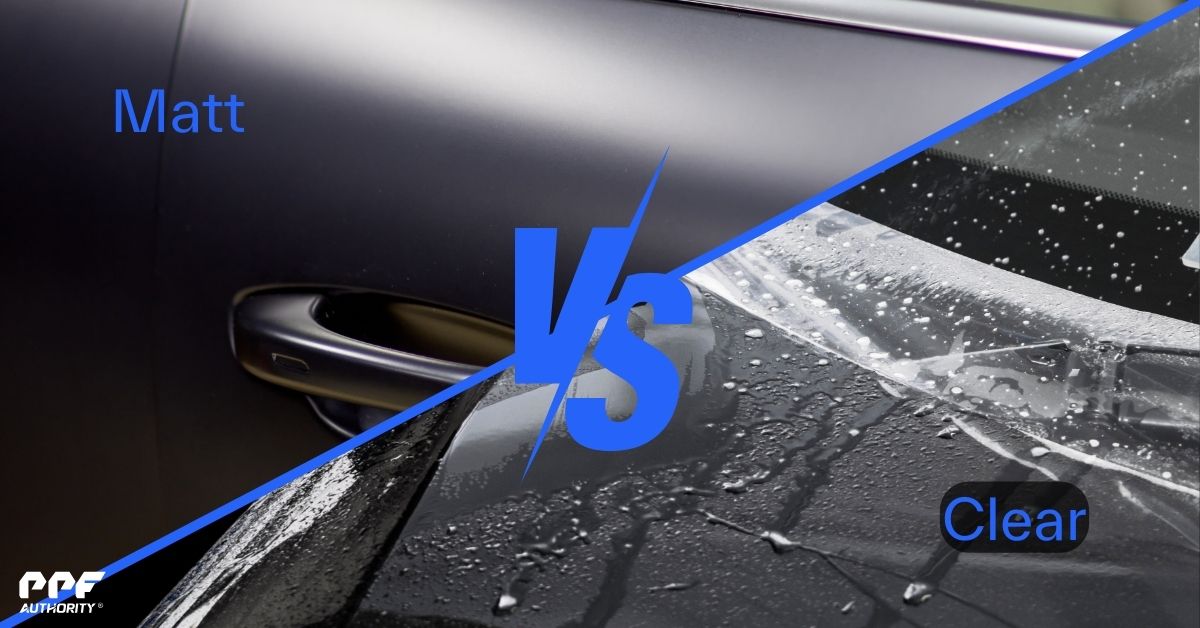The Origins of Paint Protection Film
Military Beginnings in the 1960s
Paint Protection Film (PPF) was first developed during the Vietnam War by 3M, a company renowned for its innovative materials. The U.S. military needed a solution to protect helicopter rotor blades from damage caused by debris and shrapnel.
Key Characteristics of Early PPF:
- Made from thick, durable polyurethane.
- Designed to withstand impacts and abrasions in extreme conditions.
- Limited flexibility and clarity, as aesthetics were not a priority.
This early version of PPF demonstrated its effectiveness in protecting surfaces, laying the groundwork for its later adoption in other industries.
Transition to Automotive Use in the 1980s
By the 1980s, automotive manufacturers and racing teams began experimenting with PPF to protect high-impact areas of vehicles, such as:
- Race Cars: Shielding paint and bodywork from gravel and debris during high-speed races.
- Luxury Cars: Protecting valuable exteriors from scratches and rock chips.
These early automotive applications of PPF prioritized functionality over aesthetics, as the film was relatively thick, opaque, and difficult to apply seamlessly.
PPF in the Commercial Market: 1990s and 2000s
As material technology advanced, PPF began to enter the consumer automotive market. Manufacturers improved the film’s flexibility, clarity, and ease of application, making it more appealing for everyday car owners.
Key Developments in the 1990s
- Improved Transparency: PPF became clearer, allowing it to blend seamlessly with vehicle paint.
- Custom Fitment: Early computer-cut templates were introduced, enabling more precise applications tailored to specific makes and models.
- Durability: Enhanced polyurethane formulations offered better resistance to scratches and yellowing.
The Rise of Professional Installation
PPF gained traction as a professional service, requiring skilled installers to apply the film without bubbles, wrinkles, or visible edges. At this stage, PPF was mainly used to protect high-impact areas, such as the front bumper, hood, and side mirrors.
Technological Advancements Over the Years
Self-Healing Properties
One of the most groundbreaking advancements in PPF technology was the introduction of self-healing films in the 2010s.
How It Works:
- Self-healing PPF uses advanced polymers that “heal” minor scratches and swirl marks when exposed to heat, such as sunlight or warm water.
- This innovation dramatically improved the longevity and aesthetics of PPF, making it an even more attractive option for car owners.
Hydrophobic Coatings
Modern PPFs began incorporating hydrophobic (water-repellent) properties, similar to ceramic coatings. These coatings:
- Repel water, dirt, and grime.
- Make the car easier to clean and maintain.
- Reduce the risk of water spots and contaminants bonding to the film.
Enhanced Clarity and Thickness Options
- Ultra-Clear Films: Advances in material technology have made PPF virtually invisible, preserving the car’s original appearance.
- Custom Thicknesses: Manufacturers now offer films in various thicknesses to cater to different levels of protection, from standard daily driving to off-road and racing applications.
Matte and Custom Finishes
PPF is no longer limited to glossy finishes. Matte PPF options allow car owners to achieve a unique, satin-like appearance while retaining the protective benefits of traditional film. Custom PPF options include textured finishes and films with subtle color tints for added aesthetic customization.
The Latest Updates in PPF Technology
Advanced Stretch and Adhesion Technology
Modern PPF is designed to stretch more easily during application, allowing for a seamless fit on complex curves and edges. Improved adhesives also:
- Prevent lifting or peeling over time.
- Make removal easier without damaging the underlying paint.
UV Protection
Many of today’s PPFs are engineered with built-in UV protection to:
- Prevent the film itself from yellowing over time.
- Shield the car’s paint from fading caused by prolonged sun exposure.
Multi-Layer Construction
PPF now incorporates multi-layer designs, combining:
- A durable topcoat for scratch resistance and self-healing properties.
- A flexible middle layer for impact absorption.
- A robust adhesive layer for secure application.
Pre-Cut Kits and Computer-Cut Patterns
- Advanced software now allows installers to use computer-cut templates for specific vehicle makes and models, ensuring precise fitment.
- Pre-cut kits reduce waste and speed up installation time.
Eco-Friendly Options
Manufacturers are responding to growing demand for environmentally friendly products by introducing PPFs made with:
- Reduced volatile organic compounds (VOCs).
- Recyclable materials for sustainable disposal.
The Future of PPF
Integration with Smart Technologies
Research is underway to develop “smart” PPF that can:
- Change colors or finishes at the push of a button.
- Monitor the surface for damage and notify the owner when repairs are needed.
Enhanced Self-Healing Capabilities
Future films may incorporate faster and more efficient self-healing technology, allowing deeper scratches to repair themselves without external heat.
Hybrid Protection Films
Innovations are blending PPF with ceramic coatings, combining the physical protection of PPF with the hydrophobic and gloss-enhancing properties of ceramics.
Conclusion: The Evolution of PPF
From its origins in military applications to its dominance in automotive care, Paint Protection Film has undergone remarkable advancements. Early films focused purely on functionality, but today’s PPF offers a seamless blend of protection, aesthetics, and convenience.
With features like self-healing properties, hydrophobic coatings, and custom finishes, PPF has become an essential tool for preserving the value and appearance of vehicles.
As technology continues to advance, the future of PPF promises even greater innovations, offering smarter, more durable, and eco-friendly solutions. Whether you’re a daily driver or a car enthusiast, PPF remains one of the best investments you can make for your vehicle.
